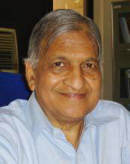
A Healthy and Educated Society as the key to Economic Prosperity
Dr. Farida Shah
Dr. Shah spoke on “Poverty and Environmental Pollution - Challenges to the Vision of a Sustainable world”
Dr. Shah visualized sustainable development as a holistic concept encompassing not merely economic development, but also social, political and spiritual development.
She posed a question by saying where is consumerism and who is consuming when in the world 80% of the population are poor and in our own country 36% people were living below the poverty line in 1993-94? Poverty she opined is a silent and persistent killer, unlike war and terrorism. Poverty is the biggest enemy of India. She agreed that poverty and violence operate in a vicious circle. The number of people killed by poverty is more than those killed by war and terrorist activities.
She strongly criticized the policy of investment. India is primarily an agricultural country, but still agriculture is in a backward state. The peasants are uneducated, they are in a state of total dependence on erratic monsoons and land holdings are very small. Jawaharlal Nehru was passionate about economic development and he believed that the development of the country must be linked to the development of industries. Hence, urban development drive gained prominence at the expense of rural development, and the gap can be felt even to this day. Allured by the lopsided urban development and job opportunities, the rural population migrated to urban areas and as projected by the UN reports this might be almost 50% by 2050.
The industries offering the so called job opportunities are all capital industries in want of skilled and educated work force, a condition which our rural migrants fail to fulfil and are hence forced to pick petty and menial jobs and live in slums where they do not even have access to safe drinking water. This results in rampant malnutrition in India. The indicator of poor health is increasing infant mortality rate (63 per 1000 in India in 2002, as against about 5 per 1000 in developed nations)
She mentioned that there is a social and cultural terrorism happening in the urban areas as a euphemism of developmental projects and big industries. Thousands of people are displaced from their original habitats without proper compensation. This, too is also an aspect of violence. Also disappointing is the increase in crime rate, especially amongst juveniles. Dr. Ashok Bapna
Dr. Ashok Bapna